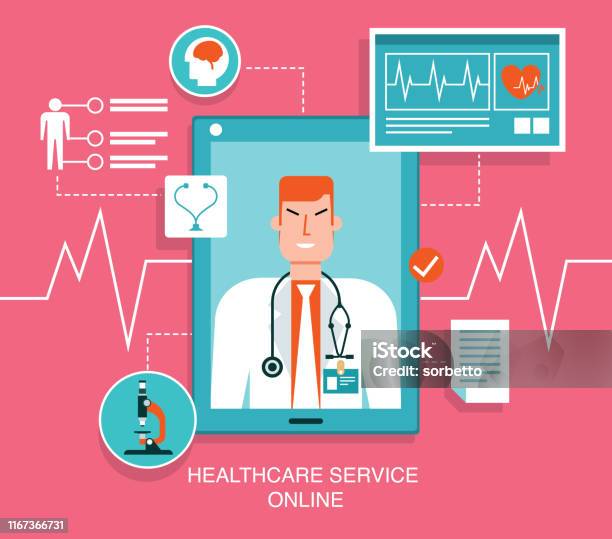Discover the Advantages of Subscription Based Healthcare for Affordable Medical Care
Discover the Advantages of Subscription Based Healthcare for Affordable Medical Care
Blog Article
Exactly How Subscription-Based Medical Care Is Revolutionizing the Clinical Sector

The Rise of Registration Health Care
In recent times, the medical care industry has actually observed a substantial shift towards subscription-based versions, mirroring wider customer trends favoring convenience and predictability. This makeover is driven by the enhancing demand for more individualized and available treatment solutions. Membership health care, sometimes described as attendant medication or straight health care, provides patients a set month-to-month cost for a variety of medical services, significantly changing standard fee-for-service designs.
The increase of subscription medical care is facilitated by developments in innovation, which allow streamlined interaction between carriers and individuals - subscription based healthcare. Digital systems and telehealth services have become indispensable, supplying clients the ability to arrange consultations, access medical documents, and receive consultations online. This technical combination not only enhances client interaction but likewise enables carriers to deliver much more effective care
Moreover, the membership version lines up with the progressing expectations of individuals who seek more control over their health care expenditures and experiences. By eliminating the unpredictability of co-pays and insurance policy claims, subscription-based healthcare uses a transparent and simple method. While this model is gaining traction, its spreading deals with difficulties such as governing difficulties and the need for wider approval within the standard health care community. Nevertheless, its growing visibility marks a turning point in the advancement of medical care shipment.
Benefits for Clients and Suppliers
Subscription-based medical care provides a multitude of benefits for both people and providers, reshaping the dynamics of medical care. For patients, this version offers boosted accessibility to healthcare services. With a predictable regular monthly fee, individuals can appreciate endless examinations, lowered delay times, and personalized care. This setup usually causes a much more positive technique to wellness management, enabling prompt treatments that can avoid persistent conditions from escalating. The monetary openness of membership versions decreases the unpredictability associated with standard fee-for-service payment, alleviating the problem of unanticipated clinical expenses.
For medical care carriers, subscription-based models foster a more sustainable and enjoyable method. Management jobs are often structured, lowering overhead costs and enabling companies to dedicate even more time to patient interaction. In general, subscription-based health care straightens the motivations of patients and suppliers, promoting an extra reliable and patient-centered healthcare shipment system.
Key Functions of the Model
Frequently, the vital functions of the subscription-based healthcare design emphasize its unique technique to delivering medical services. Central to this model is the idea of predictable, regular monthly repayments, offering people a detailed variety of services without the changability of typical fee-for-service structures. This model usually includes unlimited access to medical care services, preventative treatment, and regular examinations, making certain that individuals can involve with their health care providers proactively as opposed to reactively.
In addition, straight communication channels, such as telemedicine and messaging systems, are highlighted, permitting clients to receive prompt guidance and consultations without requiring in-person appointments. This boosts access and ease, particularly for individuals with wheelchair restraints or those staying in remote locations. The model also cultivates more powerful doctor-patient partnerships, as doctor are incentivized to concentrate on long-lasting wellness outcomes rather than short-term check outs.
Furthermore, subscription-based medical care often integrates technological technologies, such as digital wellness records and wellness tracking apps, to supply reliable and personalized care. Patients take advantage of collaborated and continual treatment management, which is customized to their certain health and wellness requirements. Ultimately, these features jointly produce a patient-centered healthcare experience, focusing on access, expense transparency, and preventative treatment.

Factors To Consider and difficulties
While the subscription-based medical care model offers various benefits, it is not without its considerations and difficulties. One considerable challenge is making certain equitable access. Membership Our site designs might accidentally favor those with greater socioeconomic condition, potentially widening differences in medical care accessibility for lower-income individuals who may fight with monthly charges. This raises moral issues concerning inclusivity and equity in healthcare delivery.
An additional obstacle lies in regulative compliance. Subscription-based health care needs to browse here are the findings a complicated web of regulations that differ by area, consisting of issues around person confidentiality, data defense, and state licensing needs. Making sure compliance without impeding the model's versatility and innovation can be discouraging for providers.
Additionally, there is the risk of overutilization or underutilization of solutions. Clients paying a repaired fee may overuse services, bring about boosted operational costs, while others might underutilize because of fear of burdening the system, possibly overlooking essential care.
Future Leads and Innovations
The landscape of subscription-based health care is poised for transformation through emerging innovations and developing prospects. As technology remains to advancement, the combination of fabricated intelligence and artificial intelligence provides significant opportunities to boost diagnostic accuracy and enhance patient monitoring. Predictive analytics can transform preventative care by identifying potential health risks before they manifest, therefore decreasing both prices and the problem on healthcare systems.
In addition, telemedicine is readied to expand within membership designs, offering people boosted access to health care experts no matter of geographical restrictions. This not just facilitates connection of treatment yet additionally encourages people to involve even more proactively in their health management. In addition, blockchain technology provides possible in protecting individual information and making certain interoperability across systems, fostering depend on and openness.
Collaborations between technology firms and medical care companies are likely to yield innovative remedies, improving individual experiences and outcomes. As these potential customers emerge, subscription-based health care has the possible to redefine how treatment is delivered and accessed.
Conclusion
Subscription-based medical care is transforming the clinical industry by offering a much more easily accessible, foreseeable, and patient-centered technique to clinical services. This design enhances patient-provider connections, guarantees monetary transparency, and highlights preventative care through unlimited examinations and telemedicine. Regardless of difficulties such as governing obstacles and possible differences in access, the membership version holds guarantee for a much more reliable and personalized medical care advice experience. As technology advances, further technologies are most likely to attend to existing obstacles and enhance health care distribution.
Membership healthcare, in some cases referred to as attendant medicine or direct primary treatment, provides patients a set monthly charge for an array of medical solutions, dramatically modifying traditional fee-for-service versions.
In addition, the subscription model lines up with the evolving expectations of people who look for even more control over their medical care expenses and experiences. For people, this model provides boosted access to health care services. Generally, subscription-based health care aligns the incentives of individuals and suppliers, advertising an extra reliable and patient-centered health care delivery system.
Moreover, telemedicine is established to expand within subscription models, offering individuals enhanced accessibility to medical care specialists regardless of geographical restrictions. - subscription based healthcare
Report this page